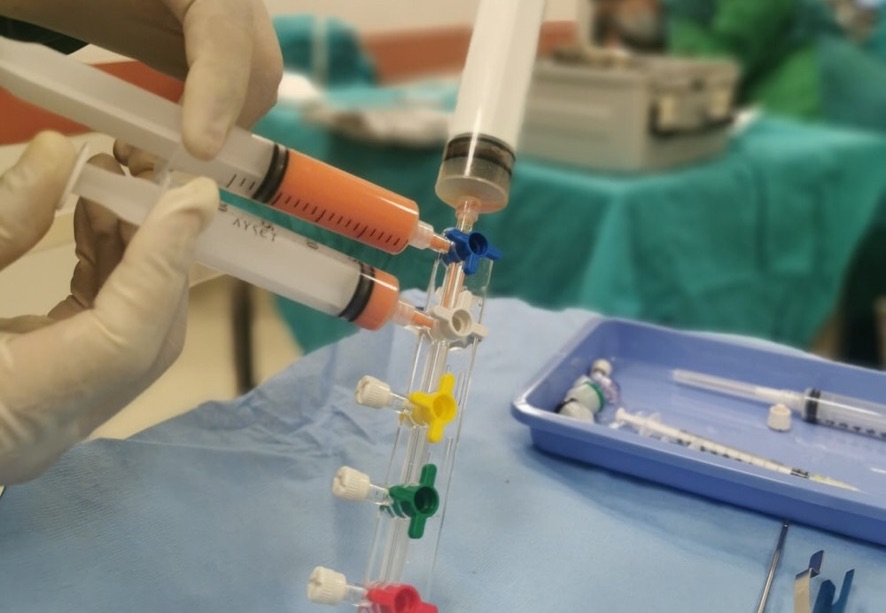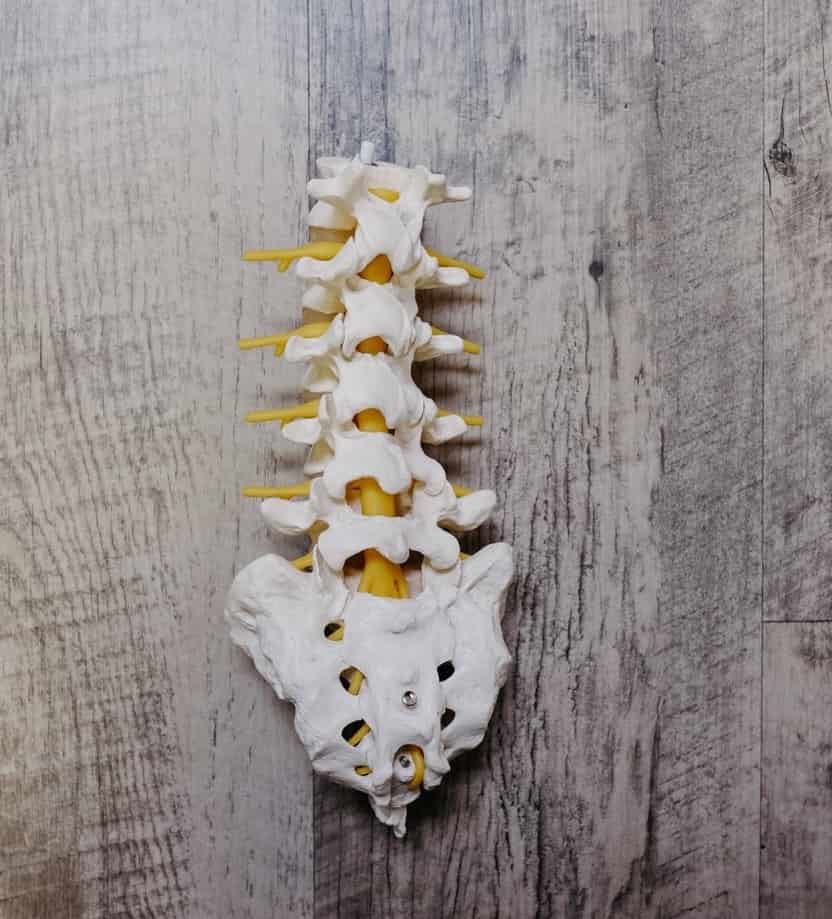WHAT IS KYPHOPLASTY?
Kyphoplasty surgery is performed for the treatment of vertebral fractures. Compression fractures can cause severe pain in your vertebrae. Due to which there may be trouble in walking because in such a situation your spinal cord is broken which keeps rubbing with each other.

PROCEDURE OF KYPHOPLASTY
Kyphoplasty surgery is usually performed along with another procedure called vertebroplasty. During vertebroplasty, doctors inject a cement mixture into the bone to make the procedure stronger.
Kyphoplasty involves inserting a cement mixture into the spine to repair vertebral fractures. In this procedure, the doctor first inserts a balloon between the bones, then inflates it with the help of a mixture. When the cement is injected into it, the balloon is removed. Kyphoplasty is also sometimes called balloon vertebroplasty.
THE PURPOSE OF KYPHOPLASTY
The purpose of kyphoplasty surgery is to treat pain in the spine due to a spinal fracture, to strengthen the bone, and to restore the straight and flexible bones of the spine that are bent or bent due to compression fractures.
WHEN IS KYPHOPLASTY SURGERY NEEDED?
A common cause of fractures caused by narrowing of the spine is thinning of your bones, or osteoporosis. Your doctor may recommend this surgery, if rest and use of painkillers do not work for spine pain for two months or more and you are unable to do physical work.
If you have a traumatic compression fracture of your spine, your doctor may also recommend this procedure incase of:
- Symptoms of cancer, including multiple myeloma
- Fracture of the spine due to an injury
IMPORTANT FACTS TO KNOW BEFORE KYPHOPLASTY SURGERY
- Kyphoplasty may be a suitable procedure for people whose bones have become weak due to cancer or the distance between the bones of the spine is lost due to osteoporosis.
- Kyphoplasty surgery and vertebroplasty are used to repair recent fractures. However, they are not helpful to overcome the problem of osteoporosis. Also, doctors do not recommend this surgery to correct curvature of the spine due to herniated discs, back pain or sclerosis.
- Both of these procedures have not yet been extensively tested in very young or healthy people. There is also no information about the long-term effects of bone cement. Therefore, this procedure is still considered safe for elderly people.
SIDE EFFECTS OF KYPHOPLASTY SURGERY
- Infection: All types of medical procedures carry some degree of risk. A needle is used during this procedure. In this case, there may be a possibility of infection or bleeding at the place where the needle is inserted.
- Damage to nerves: In some cases, there may be damage to the nerves causing numbness, weakness, or tingling.
- Allergic reaction to medicines or anesthesia: There is also the possibility of allergic reactions to the materials used during this process.
Therefore, before having this surgery, talk to your doctor or surgeon about the benefits and potential risks. If you have any questions regarding this, consult your doctor or surgeon for more details.

PROCESS OF KYPHOPLASTY SURGERY
1. Prepare yourself for kyphoplasty surgery
- The day before the surgery, the doctor may instruct you to have a blood test. Your doctor will perform imaging tests such as an X-ray or MRI scan to get an accurate picture of where your bone needs to be repaired.
- Before surgery, the doctor will give you a dose of intravenous anesthesia. You will be given pain and nausea medicines, as well as a dose of antibiotics, to reduce the risk of infection. In some cases, monitors may also be installed to check your heart, pulse, and blood pressure.
2. The procedure involved in Kyphoplasty surgery
- If only one spinal joint needs to be repaired, this process can take less than an hour.
- During this procedure, you will have to lie on your stomach.
- The surgeon will first shave off the site where the needle will be placed, then clean and sterilize it.
- After that local anesthesia or general anesthesia is given to numb the site.
3. Your surgeon will then begin the procedure as follows:
- The surgeon will insert a hollow needle (trocar) into your skin.
- With the help of X-rays, they will insert the needle into the correct location through your muscles and into your bone.
- An inflatable (air) balloon is put in the trocar.
- The balloon is then inflated to create the required space for the bone cement.
- When space is created, it is filled with a mixture of cement
- For this, the help of imaging X-ray is taken.
- When the cement is filled in its place, the needle is removed.
- The bandage is tied at that particular place.
- Stitches are not needed to close the incisions made during this procedure.
- After this, the IV and other devices are removed from your nerves.
4.After kyphoplasty surgery
You will be kept in the recovery room for some time. You will be able to go home the day after surgery. However, you may need to stay in the hospital in some cases if:
- more than one spinal cord repair
- there was a problem with the procedure of surgery
- Your general health is not good.
If you have any questions related to this, talk to your doctor about it.
5. Recovery from Kyphoplasty
How should I take care of myself after kyphoplasty surgery?
- The doctor may ask you to move around a few hours after the surgery.
- Do not do anything unless your doctor advises you to resume normal activities.
- Your doctor may also advise you on the dosage of bone-strengthening drugs.
- You can use ice packs to reduce swelling and pain at the site of surgery.
- If pain persists 48 hours after surgery, let your doctor know.
KNOW THE ADVANTAGES OF KYPHOPLASTY
If you need to get kyphoplasty done to relieve pain, then you can expect to reap the following benefits of this minimally invasive surgery. These benefits include –
- High accuracy and success rates:- Before the procedure, using X-ray imaging can help the doctor to insert the needles into the correct position and site of damage with no error. This procedure confirms and boasts about 90 % accuracy
- Lower risk of complications:- The balloon technique lowers the risk of pressure inside the vertebrae, the bone cement is less likely to seep out. This prevents cement from making contact with the spinal cord and causes post-operative nerve pain
- Small incisions:- Tiny incisions of less than 0.5 inches in length and small puncture wounds of 3mm in diameter make this procedure safe and recovery time shorter and at a faster pace. Other things go hand in hand with small punctures and incisions which are scarring, blood loss, and postoperative pain
- Time:- Your surgeon can complete the entire procedure with accuracy and good efficacy in only 15 mins to 1 hour per vertebrae depending on the severity and the detailed case taking.
WHAT MAKES YOU A GOOD CANDIDATE FOR THE KYPHOPLASTY PROCEDURE?
You may qualify for this procedure if you have a spinal fracture that causes kyphosis or forward arching of the upper back. Other patients who may benefit from this procedure of kyphoplasty are osteoporosis or those who have certain types of spinal tumor or chronic back pain
This procedure of Kyphoplasty is not for everyone. You may not qualify for kyphoplasty if you have:
- 75% collapse in front of the vertebrae
- Pinched nerves or compressed nerves
- Spin Infections
- Allergies to certain medications and anesthesia
To find out more about kyphoplasty, consult your spine specialist who will give you a clear view of the status and the best possible treatment for your condition.
If you or anyone you know is suffering from spinal fractures, neck and back pain, call us today at (469) 545-9983.
